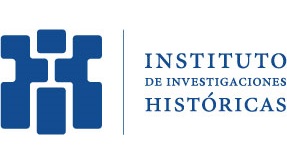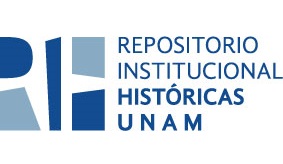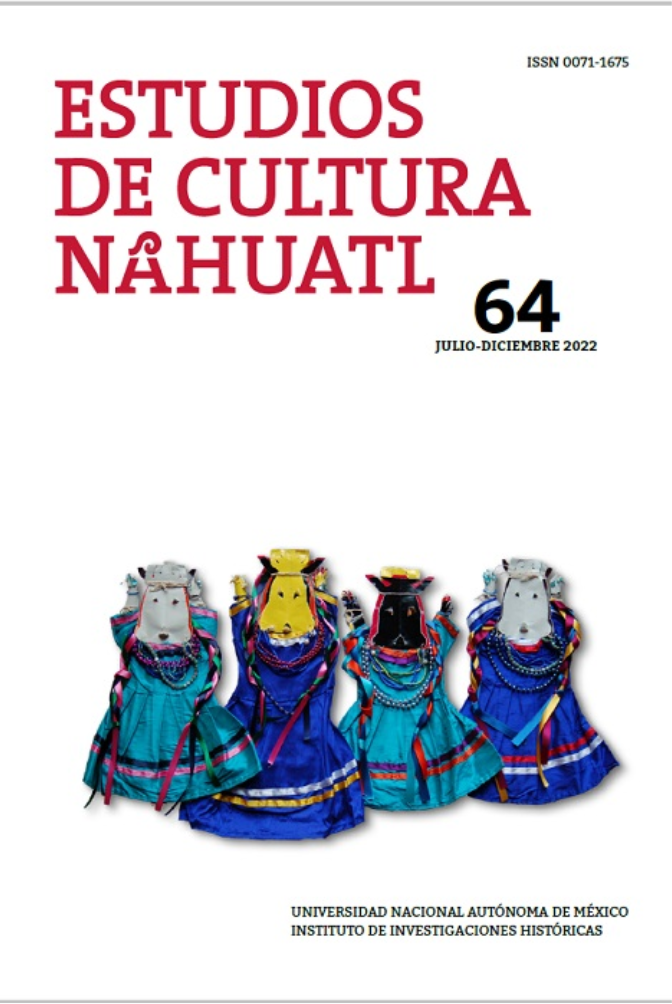Buscar
Mostrando ítems 21-30 de 203
Artículo
¿Quién es el autor del Vocabulario trilingüe?
(Instituto de Investigaciones Históricas, Universidad Nacional Autónoma de México, 2023)
The “Vocabulario/Trilingüe/Cast.Lat.Mex” is part of the Ayer collection, no. 1478 of the Newberry Library in Chicago. It is an untitled anonymous manuscript. Its author, in making it, left multiple traces of various kinds. ...
Reseña
Lori Diel. 2018. The Codex Mexicanus. A Guide to Life in Late Sixteenth-Century New Spain. Austin: University of Texas Press, and María Castañeda de la Paz and Michel Oudijk. 2019. El Códice Mexicanus, I y II. Mexico City: Universidad Nacional Autónoma de México, Instituto de Investigaciones Antropológicas
(Instituto de Investigaciones Históricas, Universidad Nacional Autónoma de México, 2022)
This review compares two recent works on the Codex Mexicanus: Lori Diel’s The Codex Mexicanus. A Guide to Life in Late Sixteenth-Century New Spain and the critical edition by María Castañeda de la Paz and Michel Oudijk (El ...
Artículo
El texto náhuatl del capítulo 20, libro II, del Códice Florentino: ensayo de paleografía y traducción
(Instituto de Investigaciones Históricas, Universidad Nacional Autónoma de México, 2022)
As part of the collective research project “Paleography and Translation of the Florentine Codex,” directed since 2005 by José Rubén Romero Galván and Pilar Máynez, this work contains the first publication of my Spanish ...
Artículo
Cut-Paper Figures and Nahua Conceptions of the Divine: Art and Revelation in Pantheistic Religion
(Instituto de Investigaciones Históricas, Universidad Nacional Autónoma de México, 2022)
Nahuas of the Huasteca Veracruzana, along with their Otomí (Ñähñu) and Tepehua (Hamasipiní) neighbors, evoke sacred spirit entities through the medium of cut-paper figures, which they arrange on altars and make the subject ...
Artículo
El calendario de 260 días y otros calendarios a la luz de la sabiduría de los ayöök de Oaxaca
(Instituto de Investigaciones Históricas, Universidad Nacional Autónoma de México, 2022)
This article explores the nature of pre-colonial calendars in Mesoamerica. Unlike other studies, data from the current utilization of the 260-and 365-day calendars among the Ayöök (Mixe) of Oaxaca are used here. In the ...
Reseña
Angela Herren Rajagopalan. 2019. Portraying the Aztec Past. The Codices Boturini, Azcatitlan, and Aubin. Austin: University of Texas Press.
(Instituto de Investigaciones Históricas, Universidad Nacional Autónoma de México, 2022)
This review examines Angela Herren Rajagopalan’s Portraying the Aztec Past, a study of three pictorial codices representing the Mexica past: Boturini, Azcatitlan, and Aubin. The author explores how Indigenous scribes ...
Artículo
Una nueva narrativa del contacto de nahuas y castellanos en el suroeste de Puebla, México
(Instituto de Investigaciones Históricas, Universidad Nacional Autónoma de México, 2022)
This paper presents a Nahuatl text from an unpublished document relating to the early years of contact between Nahuas and Spaniards in southwestern Puebla, Mexico. We provide an overview of the context of the document, the ...
Reseña
Xavier Noguez, coord. 2017. Códices. México: Consejo Nacional para la Cultura y las Artes.
(Instituto de Investigaciones Históricas, Universidad Nacional Autónoma de México, 2022)
This review evaluates the book Códices, coordinated by Xavier Noguez and part of the Historia Ilustrada de México series. The volume gathers six essays by national and international experts that provide an accessible, ...
Reseña
Eleni Kefala. 2020. The Conquered. Byzantium and America on the Cusp of Modernity. Washington, D. C.: Dumbarton Oaks Research Library and Collection
(Instituto de Investigaciones Históricas, Universidad Nacional Autónoma de México, 2022)
This review discusses Eleni Kefala’s book The Conquered, which compares two traumatic events—the fall of Constantinople (1453) and the fall of Tenochtitlan (1521)—through three poetic texts composed after the conquests: ...
Artículo
Las flores de la guerra: análisis polínico de la Ofrenda 120
(Instituto de Investigaciones Históricas, Universidad Nacional Autónoma de México, 2022)
The pollen analysis of offerings discovered by the Templo Mayor Project has allowed us to identify the flowers that were deposited by the Aztecs as one of the many gifts that they gave to their gods. Knowing the species ...












